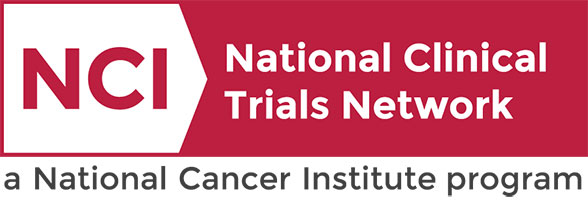Clinical Trials Search at Vanderbilt-Ingram Cancer Center
Surgery With or Without Neoadjuvant Chemotherapy in High Risk RetroPeritoneal Sarcoma
Sarcoma
Sarcoma
This is a multicenter, randomized, open label phase lll trial to assess whether preoperative chemotherapy, as an adjunct to curative-intent surgery, improves the prognosis of high risk DDLPS (dedifferentiated Liposarcoma) and LMS (Leiomyosarcoma) patients as measured by disease free survival.
After confirmation of eligibility criteria, patients will be randomized to either the standard arm or experimental arm.
After confirmation of eligibility criteria, patients will be randomized to either the standard arm or experimental arm.
Sarcoma
III
Davis, Elizabeth
NCT04031677
ECOGSAREA7211
Active Myeloid Target Compound Combinations in MDS/MPN Overlap Syndromes Overlap Syndromes (ABNL-MARRO)
ABNL-MARRO (A Basket study of Novel therapy for untreated MDS/MPN and Relapsed/Refractory Overlap Syndromes) is an international European-American cooperation providing the framework for collaborative studies to advance treatment of myelodysplastic/myeloproliferative neoplasms (MDS/MPN) and explore clinical-pathologic markers of disease severity, prognosis and treatment response.
ABNL MARRO 001 (AM-001) is an Open label, phase 1/2 study within the framework of the ABNL-MARRO that will test novel treatment combinations in MDS/MPN. Each Arm of AM-001 will test an active myeloid target compound in combination with ASTX727, an oral drug combining fixed doses of the DNA methyltransferase inhibitor (DNMTi) decitabine and the cytidine deaminase inhibitor E7727, also known as cedazuridine in a single tablet.
ABNL MARRO 001 (AM-001) is an Open label, phase 1/2 study within the framework of the ABNL-MARRO that will test novel treatment combinations in MDS/MPN. Each Arm of AM-001 will test an active myeloid target compound in combination with ASTX727, an oral drug combining fixed doses of the DNA methyltransferase inhibitor (DNMTi) decitabine and the cytidine deaminase inhibitor E7727, also known as cedazuridine in a single tablet.
Not Available
I/II
Not Available
NCT04061421
VICCHEMP1977
A Phase Clinical Study of HLX22 in Combination With Trastuzumab and Chemotherapy for the Treatment of Gastroesophageal Junction and Gastric Cancer
Multiple Cancer Types
This is a double-blind, randomized, multiregion, comparative phase clinical study designed to evaluate the efficacy and safety of HLX22 in combination with trastuzumab and chemotherapy as first-line treatment in patients with HER2-positive locally advanced/metastatic adenocarcinoma of the gastric and/or gastroesophageal junction (G/GEJ).Eligible subjects will be randomized to the two groups based on a 1:1 ratio. Enrolled subjects shall be treated with the study drug until the loss of clinical benefit, death, intolerable toxicity, withdrawal of informed consent, or other reasons specified by the protocol (whichever occurs first).
Esophageal,
Gastric/Gastroesophageal
III
Gibson, Mike
NCT06532006
VICCGI24578
pBI-11 & TA-HPV (With Pembrolizumab as Treatment for Patients w/Advanced, PD-L1 CPS1, hrHPV+ Oropharyngeal Cancer
This phase II trial tests how well pB1-11 and human papillomavirus tumor antigen (TA-HPV) vaccines in combination with pembrolizumab work in treating patients with oropharyngeal cancer that has come back (recurrent) or that has spread from where it first started (primary site) to other places in the body (metastatic) and that is PD-L1 and human papillomavirus (HPV) positive. Oropharyngeal cancer is a type of head and neck cancer involving structures in the back of the throat (the oropharynx), such as the non-bony back roof of the mouth (soft palate), sides and back wall of the throat, tonsils, and back third of the tongue. Scientists have found that some strains or types of a virus called HPV can cause oropharyngeal cancer. pBI-11 is a circular deoxyribonucleic acid (DNA) (plasmid) vaccine that promotes antibody, cytotoxic T cell, and protective immune responses. TA-HPV is an investigational recombinant vaccina virus derived from a strain of the vaccina virus which was widely used for smallpox vaccination. Vaccination with this TA-HPV vaccine may stimulate the immune system to mount a cytotoxic T cell response against tumor cells positive for HPV, resulting in decreased tumor growth. Immunotherapy with monoclonal antibodies, such as pembrolizumab, may help the body's immune system attack the cancer, and may interfere with the ability of tumor cells to grow and spread by inhibiting the PD-1 receptor. These investigational vaccines could cause or enhance an immune response in the body against HPV, during which time the activity of pembrolizumab against oropharyngeal cancer associated with HPV may be strengthened. These drugs in combination may be more effective in increasing the ability of the immune system to fight oropharyngeal cancer than pembrolizumab alone.
Not Available
II
Not Available
NCT05799144
VICCHN2208
A Study of PHST001 in Advanced Solid Tumors
Miscellaneous
Miscellaneous
PHST001-101 is a multicenter, open-label, Phase 1 study of PHST001 in patients with advanced solid tumors. The study design includes a Dose Escalation Phase and a Dose Expansion Phase, and will enroll patients with advanced relapsed and/or refractory solid tumors. The study's primary object is to evaluate the safety and tolerability of PHST001 and determine the RP2D (Recommended Phase 2 dose) of PHST001.
Miscellaneous
I
Davis, Elizabeth
NCT06840886
VICCPHI24591
Testing the Combination of the Anti-Cancer Drugs Temozolomide and M1774 to Evaluate Their Safety and Effectiveness
Multiple Cancer Types
This phase I/II trial studies the side effects and best dose of temozolomide and M1774 and how well they works in treating patients with cancer that has spread from where it first started (primary site) to other places in the body (metastatic) and may have spread to nearby tissue, lymph nodes, or distant parts of the body (advanced). Temozolomide is in a class of medications called alkylating agents. It works by damaging the cell's deoxyribonucleic acid (DNA) and may kill tumor cells and slow down or stop tumor growth. M1774 may stop the growth of cancer cells by blocking some of the enzymes needed for cell growth. Adding M1774 to temozolomide may shrink or stabilize cancer for longer than temozolomide alone.
Miscellaneous,
Phase I
I/II
Davis, Elizabeth
NCT05691491
VICCPHI10572
Radiotherapy to Block Oligoprogression In Metastatic Non-Small-Cell Lung Cancer
Lung
Lung
This study is being done to answer the following question: Can the chance of lung cancer growing or spreading be lowered by adding targeted radiotherapy to the usual combination of drugs?
This study is being done to find out if this approach is better or worse than the usual approach for lung cancer. The usual approach is defined as the care most people get for non-small cell lung cancer.
This study is being done to find out if this approach is better or worse than the usual approach for lung cancer. The usual approach is defined as the care most people get for non-small cell lung cancer.
Lung
III
Osmundson, Evan
NCT06686771
NRGTHOCCTGBR38
Testing Nivolumab and Ipilimumab Immunotherapy With or Without the Targeted Drug Cabozantinib in Recurrent, Metastatic, or Incurable Nasopharyngeal Cancer
Head/Neck
Head/Neck
This phase II trial tests how well nivolumab and ipilimumab immunotherapy with or without cabozantinib works in treating patients with nasopharyngeal cancer that has come back (after a period of improvement) (recurrent), has spread from where it first started (primary site) to other places in the body (metastatic), or for which no treatment is currently available (incurable). Immunotherapy with monoclonal antibodies, such as nivolumab and ipilimumab, may help the body's immune system attack the cancer, and may interfere with the ability of tumor cells to grow and spread. Cabozantinib is in a class of medications called kinase inhibitors. It works by blocking the action of an abnormal protein that signals cancer cells to multiply. This helps slow or stop the spread of cancer cells. Giving immunotherapy with nivolumab and ipilimumab and targeted therapy with cabozantinib may help shrink and stabilize nasopharyngeal cancer.
Head/Neck
II
Choe, Jennifer
NCT05904080
ALLHNA092105
Testing What Happens When an Immunotherapy Drug (Pembrolizumab) is Given by Itself Compared to the Usual Treatment of Chemotherapy With Radiation After Surgery for Recurrent Head and Neck Squamous Cell Carcinoma
Head/Neck
Head/Neck
This phase II trial studies the effect of pembrolizumab alone compared to the usual approach (chemotherapy \[cisplatin and carboplatin\] plus radiation therapy) after surgery in treating patients with head and neck squamous cell carcinoma that has come back (recurrent) or patients with a second head and neck cancer that is not from metastasis (primary). Radiation therapy uses high energy radiation or protons to kill tumor cells and shrink tumors. Cisplatin is in a class of medications known as platinum-containing compounds. It works by killing, stopping or slowing the growth of cancer cells. Carboplatin is also in a class of medications known as platinum-containing compounds. It works in a way similar to the anticancer drug cisplatin, but may be better tolerated than cisplatin. Carboplatin works by killing, stopping or slowing the growth of cancer cells. Immunotherapy with monoclonal antibodies, such as pembrolizumab, may help the body's immune system attack the cancer and may interfere with the ability of tumor cells to grow and spread. Giving pembrolizumab alone after surgery may work better than the usual approach in shrinking recurrent or primary head and neck squamous cell carcinoma.
Head/Neck
II
Choe, Jennifer
NCT04671667
ECOGHNEA3191
A Study With Tovorafenib (DAY101) as a Treatment Option for Progressive, Relapsed, or Refractory Langerhans Cell Histiocytosis
This phase II trial tests the safety, side effects, best dose and activity of tovorafenib (DAY101) in treating patients with Langerhans cell histiocytosis that is growing, spreading, or getting worse (progressive), has come back (relapsed) after previous treatment, or does not respond to therapy (refractory). Langerhans cell histiocytosis is a type of disease that occurs when the body makes too many immature Langerhans cells (a type of white blood cell). When these cells build up, they can form tumors in certain tissues and organs including bones, skin, lungs and pituitary gland and can damage them. This tumor is more common in children and young adults. DAY101 may stop the growth of cancer cells by blocking some of the enzymes needed for cell growth. Using DAY101 may be effective in treating patients with relapsed or refractory Langerhans cell histiocytosis.
Not Available
II
Not Available
NCT05828069
VICC-NTPED24012


